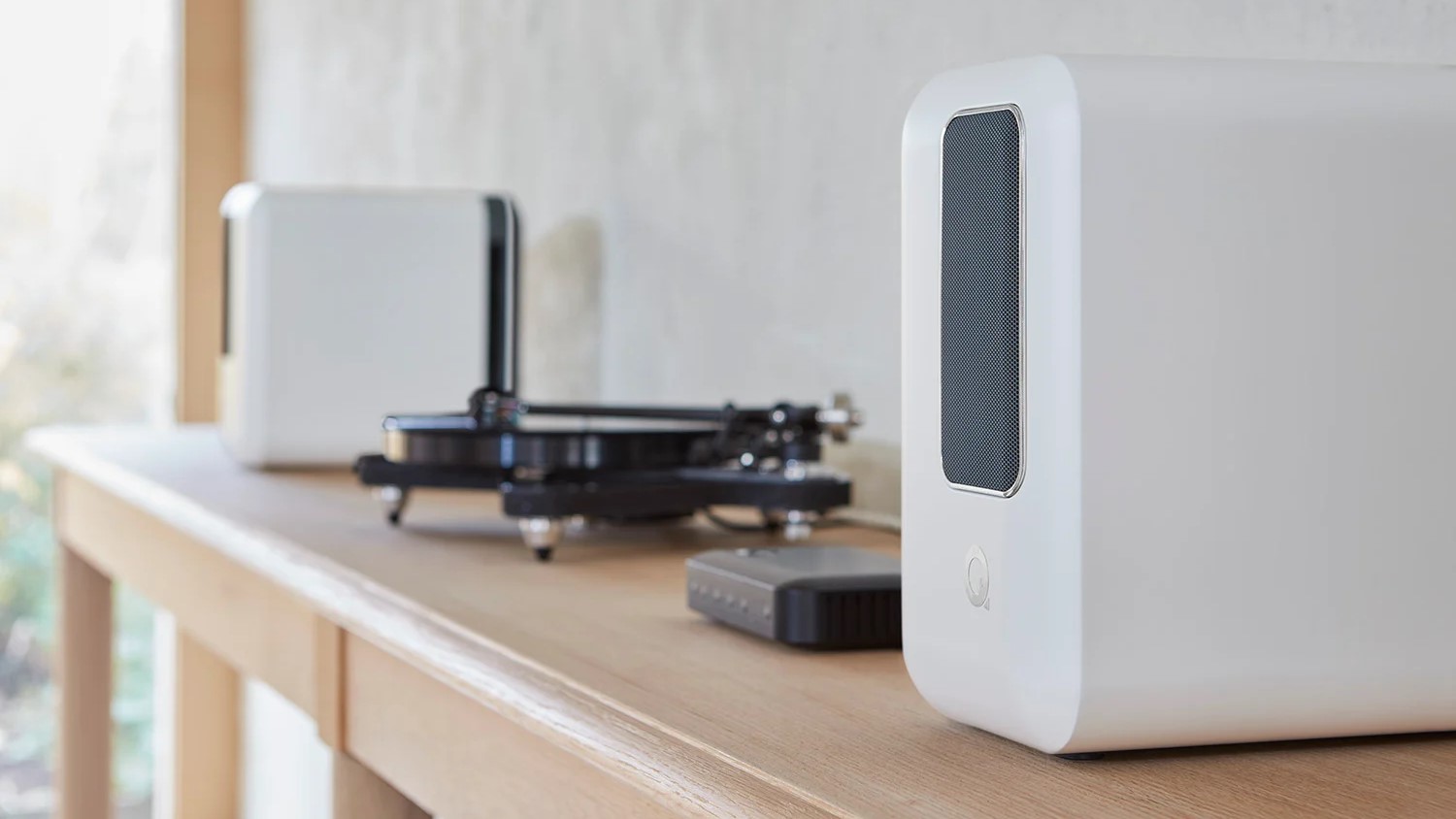The company’s new Active line of speakers, however, certainly try to break the mold.
The line contains the company’s first active, DSP-powered wireless speakers, the Active 200 bookshelf and the Active 400 floorstanders. But what makes them unique is Q Acoustics’ choice of drivers: instead of the usual woofer covering the lows and and tweeter covering the highs, the majority of the frequency range is covered by a pair of Balanced Mode Radiators or BMRs for short. I wouldn’t blame you if you’ve never heard of BMRs. They’re a relatively unusual type of driver that use specially placed weights to control cone breakup in a way that extends frequency range and widens dispersion beyond the usual for a driver its size. It’s extremely unusual to see a high-end speaker that uses BMRs throughout so much of its frequency range. In this case, the lower BMR handles frequencies up to 5,000 Hz only, while the upper BMR handles the full range of frequencies down to 150 Hz. BMRs aside, the Active 200 does use a 4.5-inch ‘subwoofer’ below 150 Hz that helps the speaker reach down to 46Hz (-6dB). The Active 400 has two of these subwoofers and will presumably reach lower, although Q acoustics doesn’t say by how much yet. It’s 2020, so the speakers come with a wide selection of sources in their wireless hub. You have RCA, HDMI, and optical as physical inputs and streaming standards include Chromecast, AirPlay 2, Bluetooth, Spotify Connect, UPnP, and more, and it can be controlled via the Google Assistant. Streaming happens at up to 24-bit/96 kHz resolution. As a nice touch, the hub includes a subwoofer out should you want to increase the low end response. Ultimately, the proof is in the pudding — we won’t know how these speakers perform until we get to hear them — which we hope to do soon.
